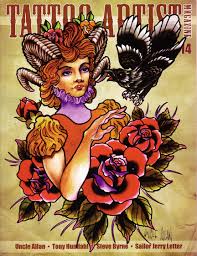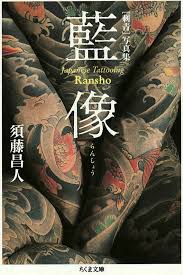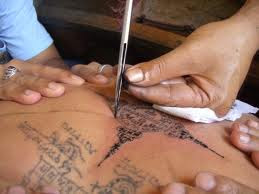



When it comes to body art, how can one not talk about tattoos? A craze that dates back to the prehistoric times, but has come back in vogue forcefully since the past few years, tattooing serves the purposes of decorative body modification. In the present times, tattoos are often known as tattoos as Ink, Tats, Art and even Work, while the tattooists are referred to as Artists. Are you interested in exploring the body art further? Do you want to know about the various designs as well as genres of tattoos? If yes, then browsing through the tattoo books, also known as tattoo readings, will be the best bet. Go through the following lines and get a list of some of the most popular books on the body art of tattooing.
Tattoo Literature* 1000 Tattoos (by
Henk Schiffmacher)
* A to Z of Tattooing (by
Huck Spaulding)
* Advanced Tattoo Art: How-To Secrets From the Masters (by Doug Mitchel)
* American Tattoo - As Ancient As Time, As Modern As Tomorrow (by
Alan Govenar)
* Bad Boys and Tough Tattoos - A Social History of the Tattoo with Gangs, Sailors and Street-Corner Punks (by Samuel M. Steward)
* Bodies of Subversion - A Secret History of Women and Tattoo (by
Margot Mifflin)
* Bushido: Legacies of the Japanese Tattoo (by
Takahiro Kitamura)
* Expose - The Art Of Tattoo (by Tim O Sullivan)
* Great Book of Tattoo Designs (by Lora S. Irish)
* Henna Floral Tattoos (by Anna Pomaska)
* Russian Prison Tattoos: Codes of Authority, Domination and Struggle (by Alix Lambert)
* Ink: The Not-Just-Skin-Deep Guide to Getting a Tattoo (by Terisa Green)
* Japanese Tattoo (by Sandi Fellman)
* The Total Tattoo Book (by Amy Krakow)
* New York City Tattoo - The Oral History of an Urban Art (by Michael McCabe, Hubert, Jr. Selby)
* Tattoo: Secrets of a Strange Art (by Albert Parry)
* Return of the Tribal - A Celebration of Body Adornment: Piercing, Tattooing, Scarification, Body Painting (by
Rufus C. Camphausen)
* The Tattoo History Source Book (by Steve Gilbert)
* Russian Criminal Tattoo Encyclopaedia Volume II (by Danzig Baldaev and Sergei Vasiliev)
* Sailor Jerry's Tattoo Stencils (by Kate Hellenbrand)
* Stewed Screwed and Tattooed (by Madame Chinchilla)
* Tattoo: From Idea To Ink (By Joy Surles)
* The Art of Tattooing (by Joshua Andrews)
* The Body Art Book - A Complete, Illustrated Guide to Tattoos, Piercing, and Other Body Modifications (by Jean-Chris Miller)
* Tattoos (by Mitch O'Connell)
* The Mammoth Book of Tattoos (by Lal Hardy)
* The Tattoo Encyclopedia: A Guide to Choosing Your Tattoo (by Terisa Green)
* Vintage Tattoos (by Carol Clerk)
* Customizing the Body: The Art and Culture of Tattooing (by Clinton Sanders, D. Angus Vail )
* Tattooing the World: Pacific Designs in Print & Skin (by Juniper Ellis)



















































